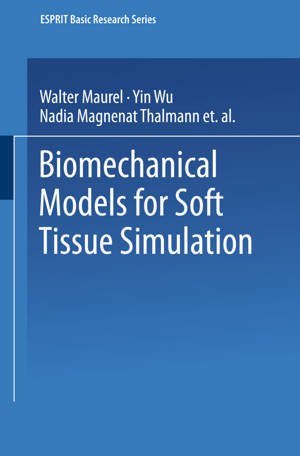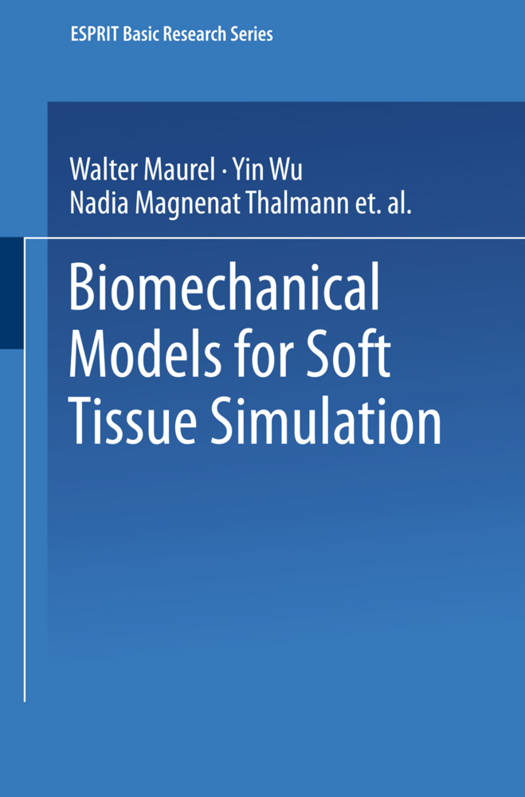
Je cadeautjes zeker op tijd in huis hebben voor de feestdagen? Kom langs in onze winkels en vind het perfecte geschenk!
- Afhalen na 1 uur in een winkel met voorraad
- Gratis thuislevering in België vanaf € 30
- Ruim aanbod met 7 miljoen producten
Je cadeautjes zeker op tijd in huis hebben voor de feestdagen? Kom langs in onze winkels en vind het perfecte geschenk!
- Afhalen na 1 uur in een winkel met voorraad
- Gratis thuislevering in België vanaf € 30
- Ruim aanbod met 7 miljoen producten
Zoeken
Biomechanical Models for Soft Tissue Simulation
Walter Maurel, Yin Wu, Nadia Magnenat Thalmann, Daniel Thalmann
€ 83,95
+ 167 punten
Omschrijving
Information Technology is having an increasing influence on medicine. This can be readily observed by anybody visiting a hospital or consulting a doctor, or even by going to the chemist. A range of new medical instruments, new scanners, new on-line diagnostics as well as more effective distribution methods all increasingly contain IT elements that enable new more effective medical tools and services. But there is also a lot going on "behind the scenes", at the research and development level, that will greatly influence the medical tools and services of tomorrow. In this respect, Esprit, the European Commission's IT research program, has been supporting a range of research and development projects that are contributing to the opening of new avenues in the medical field. At the 1997 European IT Conference, a special exhibit has highlighted Esprit's contributions in the area, including, for example projects that have succeeded in developing: - a prototype visual prosthesis linked to the optic nerve (MIVIP) - implantable blood micro-pumps (IMALP) - new low-power pacemakers and defibrillators (HIPOCRA T) - new high-quality 3D ultrasound images (NICE) - realistic computer models of the human musculo-skeletal system (CHARM) CHARM, the last - but not least - of these, is further elaborated in this book.
Specificaties
Betrokkenen
- Auteur(s):
- Uitgeverij:
Inhoud
- Aantal bladzijden:
- 174
- Taal:
- Engels
- Reeks:
Eigenschappen
- Productcode (EAN):
- 9783662035917
- Verschijningsdatum:
- 18/04/2014
- Uitvoering:
- Paperback
- Formaat:
- Trade paperback (VS)
- Afmetingen:
- 156 mm x 234 mm
- Gewicht:
- 281 g

Alleen bij Standaard Boekhandel
+ 167 punten op je klantenkaart van Standaard Boekhandel
Beoordelingen
We publiceren alleen reviews die voldoen aan de voorwaarden voor reviews. Bekijk onze voorwaarden voor reviews.









